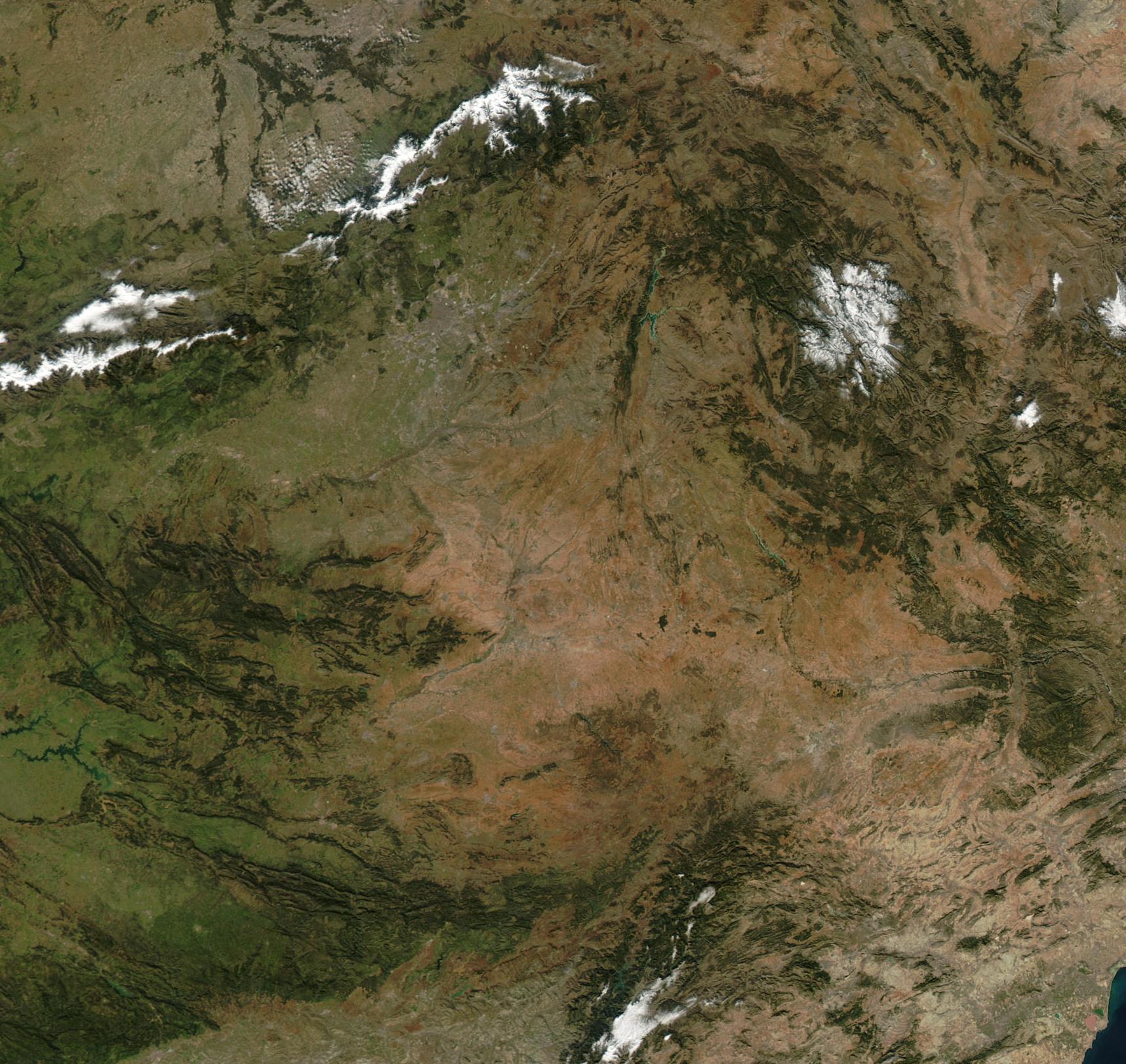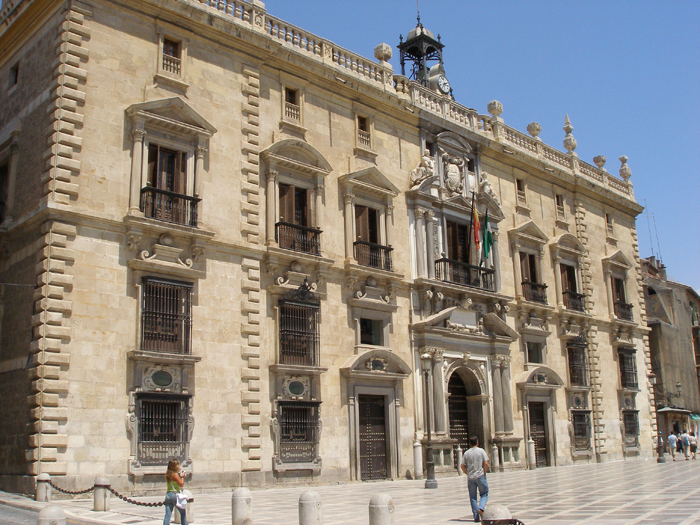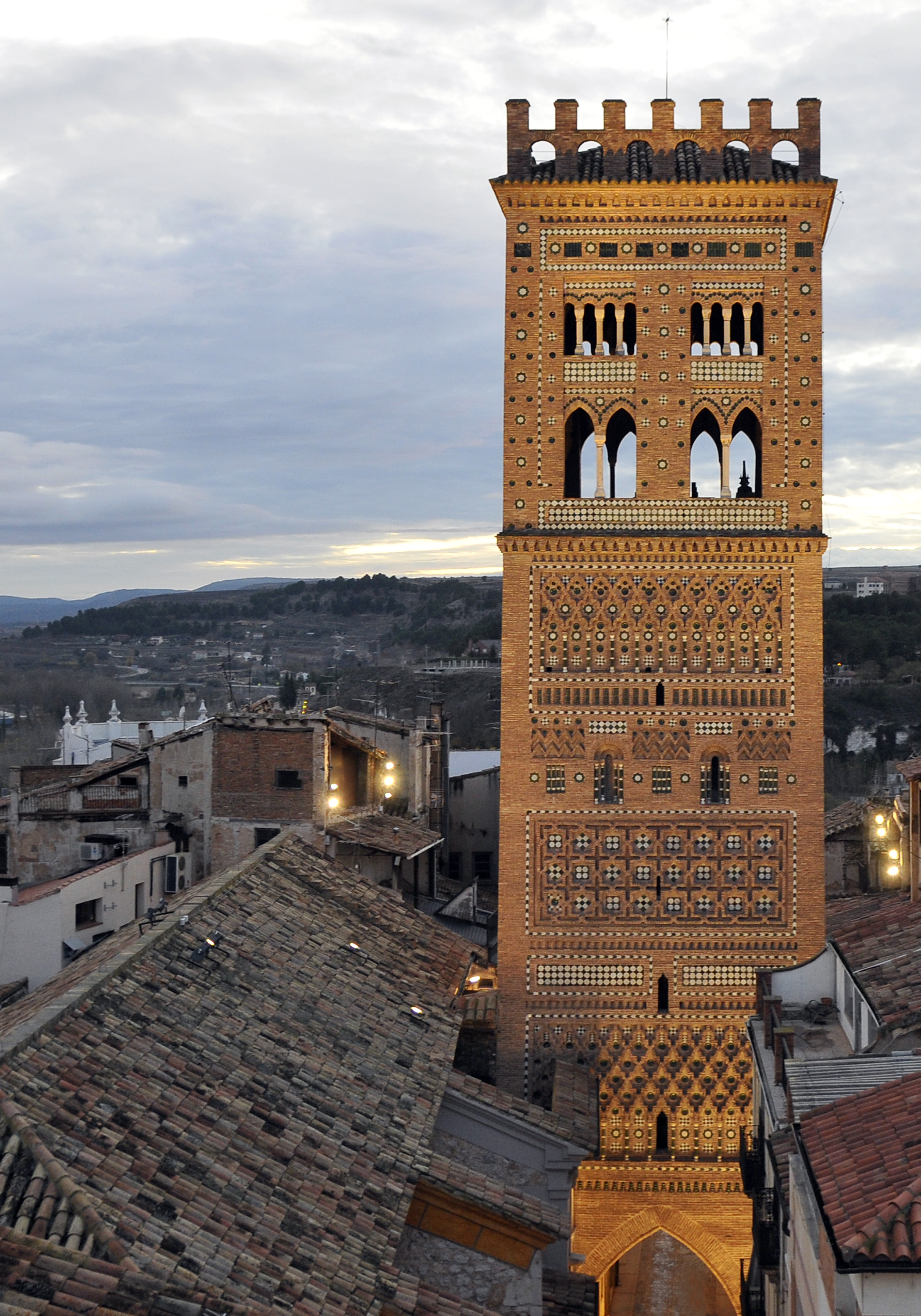|
Socuéllamos
Socuéllamos is a town and municipality of Spain located in the province of Ciudad Real, Castilla–La Mancha. It is famous for its wines. The abandoned town of Torre de Vejezate is located within Socuéllamos municipal term. History Juan Osórez, Master of the Order of Santiago, granted a ''chartae populationis'' to the place of Socuéllamos in the 1290s, in the context of the quarrel of the order with the of Alcaraz. In order to encourage settlement of the territory, privileges of exemption from taxes and tributes (except for the diezmo paid to Uclés) were granted to those who cultivated vineyards. By the turn of modernity, Socuéllamos enjoyed a scarcely productive yet extensive ''encomienda'', whereas it was populated by religious and superstitious Old Christians, with no presence of old ''Mudéjares''. Population increased throughout the early 16th century thanks to its strategical crossroads location. In the wake of the 1569 Morisco Revolt, 49 families of unassimi ... [...More Info...] [...Related Items...] OR: [Wikipedia] [Google] [Baidu] |
CB Socuéllamos
CB Socuéllamos is a Spanish professional basketball team. In May 2021, CB Socuéllamos was proclaimed champion of the Primera División de Baloncesto of Castile-La Mancha and promoted to the Liga EBA The Tercera FEB, formerly known as Liga EBA (''Liga Española de Baloncesto Aficionado''), is a Spanish basketball championship that is the fourth tier level in the Spanish basketball league system, after the Liga ACB, Primera FEB and Segunda FEB ....El CB Socuéllamos se proclama campeón de la Primera Nacional de Baloncesto de C-LM y ahora a por la EBA infoSocuellamos, 22 May 2021. Accessed 5 October 2021. CB Socuéllamos beat [...More Info...] [...Related Items...] OR: [Wikipedia] [Google] [Baidu] |
Castilla–La Mancha
Castilla–La Mancha (, ; ) is an Autonomous communities of Spain, autonomous community of Spain. Comprising the provinces of Province of Albacete, Albacete, Province of Ciudad Real, Ciudad Real, Province of Cuenca, Cuenca, Province of Guadalajara, Guadalajara and Province of Toledo, Toledo, it was created in 1982. The government headquarters are in Toledo, Spain, Toledo, which is the capital ''de facto''. It is a landlocked region largely occupying the southern half of the Iberian Peninsula's Meseta Central, Inner Plateau, including large parts of the catchment areas of the Tagus, the Guadiana and the Júcar, while the northeastern relief comprises the Sistema Ibérico mountain massif. It is one of the most sparsely populated of Spain's regions, with Albacete, Guadalajara, Spain, Guadalajara, Toledo, Spain, Toledo, Talavera de la Reina and Ciudad Real being the largest cities. Castilla–La Mancha is bordered by Castile and León, Community of Madrid, Madrid, Aragon, Valencian c ... [...More Info...] [...Related Items...] OR: [Wikipedia] [Google] [Baidu] |
Province Of Ciudad Real
The province of Ciudad Real () is a province in the southwestern part of the autonomous community of Castile-La Mancha, Spain. It is bordered by the provinces of Cuenca, Albacete, Jaén, Córdoba, Badajoz, and Toledo. It is partly located in the old natural region of La Mancha. Its capital is Ciudad Real. It is the third largest province by area in all of Spain, after Cáceres and Badajoz. The historic comarca Campo de Calatrava is located in the center of the province. History Ciudad Real was one of the 49 provinces in which Spain was divided in the territorial reorganization of 1833, taking its name from its largest city and capital. Its limits corresponded more or less to the historical province of La Mancha, which was part of the kingdom of Toledo. The Spanish government created the autonomous community of Castilla-La Mancha on 15 November 1978, as one of several autonomous regions. The new, hyphenated name was chosen to join the historic Castilla region, which ... [...More Info...] [...Related Items...] OR: [Wikipedia] [Google] [Baidu] |
Alcaraz, Albacete
Alcaraz is a municipality of Spain located in the province of Albacete, Castilla–La Mancha Castilla–La Mancha (, ; ) is an Autonomous communities of Spain, autonomous community of Spain. Comprising the provinces of Province of Albacete, Albacete, Province of Ciudad Real, Ciudad Real, Province of Cuenca, Cuenca, Province of Guadalajar .... The municipality spans across a total area of 370.53 km2. The locality lies at 953 metres above mean sea level. History Alcaraz was incorporated to Christian domain in 1213. The town was granted the status of city in 1429, by means of the concession of a royal privilege. The urban oligarchy controlling political power and riches in the later Middle Ages was formed by a mix of the '' nobleza hidalga'' (descended from '' knights-villein'') and the so-called ''caballeros cuantiosos''. The Alcaraz's extensive municipal territory during the Middle Ages had decreased fivefold by the end of the 16th century, after the emancipation of severa ... [...More Info...] [...Related Items...] OR: [Wikipedia] [Google] [Baidu] |
Liga EBA
The Tercera FEB, formerly known as Liga EBA (''Liga Española de Baloncesto Aficionado''), is a Spanish basketball championship that is the fourth tier level in the Spanish basketball league system, after the Liga ACB, Primera FEB and Segunda FEB. It is administered by the Spanish Basketball Federation, FEB. It was previously the Spanish second tier level competition from 1994 to 1996, the third tier level from 1996 to 2000, and the fifth tier level, from 2007 to 2009. From the 2024–25 season it will be named Tercera FEB. Competition format The Tercera FEB is made up of five inter-regional groups. After the regular season, sixteen teams advance to the playoffs, where only four teams are promotion and relegation, promoted to the Segunda FEB. The lowest ranked teams of each group, are promotion and relegation, relegated to the Primera División de Baloncesto, Primera División. History Final Eight Format The best teams in the Final Eight were usually promoted to a higher divisi ... [...More Info...] [...Related Items...] OR: [Wikipedia] [Google] [Baidu] |
Pogrom
A pogrom is a violent riot incited with the aim of Massacre, massacring or expelling an ethnic or religious group, particularly Jews. The term entered the English language from Russian to describe late 19th- and early 20th-century Anti-Jewish pogroms in the Russian Empire, attacks on Jews in the Russian Empire (mostly within the Pale of Settlement). Retrospectively, similar attacks against Jews which occurred in other times and places were renamed pogroms. Sometimes the word is used to describe publicly sanctioned purgative attacks against non-Jewish groups. The characteristics of a pogrom vary widely, depending on the specific incident, at times leading to, or culminating in, massacres. Significant pogroms in the Russian Empire included the Odessa pogroms, Warsaw pogrom (1881), Kishinev pogrom (1903), Kiev pogrom (1905), and Białystok pogrom (1906). After the collapse of the Russian Empire in 1917, several pogroms occurred amidst the power struggles in Eastern Europe, inclu ... [...More Info...] [...Related Items...] OR: [Wikipedia] [Google] [Baidu] |
Ethnic Conflict
An ethnic conflict is a conflict between two or more ethnic groups. While the source of the conflict may be political, social, economic or religious, the individuals in conflict must expressly fight for their ethnic group's position within society. This criterion differentiates ethnic conflict from other forms of struggle. Academic explanations of ethnic conflict generally fall into one of three schools of thought: primordialist, instrumentalist or constructivist. Recently, some have argued for either top-down or bottom-up explanations for ethnic conflict. Intellectual debate has also focused on whether ethnic conflict has become more prevalent since the end of the Cold War, and on devising ways of managing conflicts, through instruments such as consociationalism and federalisation. Theories of causes It is argued that rebel movements are more likely to organize around ethnicity because ethnic groups are more apt to be aggrieved, better able to mobilize, and more likely ... [...More Info...] [...Related Items...] OR: [Wikipedia] [Google] [Baidu] |
Kingdom Of Granada (Crown Of Castile)
The Kingdom of Granada (; ) was a territorial jurisdiction of the Crown of Castile from the conclusion of the ''Reconquista'' in 1492 until Javier de Burgos' provincial division of Spain in 1833. This was a "kingdom" (''"reino"'') in the second sense given by the '' Diccionario de la lengua española de la Real Academia Española'': the Crown of Castile consisted of several such kingdoms. Its extent is detailed in Gelo del Cabildo's 1751 ''Respuestas Generales del Catastro de Ensenada'' (1750–54), which was part of the documentation of a census. Like the other kingdoms within Spain, the Kingdom of Granada was abolished by the 1833 territorial division. After the Granada War ended 2 January 1492, the old Muslim-ruled Emirate of Granada became part of the Crown of Castile. The kingdom was the location of a Muslim rebellion in 1499-1501 and after the Muslims were defeated and forcibly converted, a Morisco rebellion in 1568–1571. Following the annexation, The city of Granada ... [...More Info...] [...Related Items...] OR: [Wikipedia] [Google] [Baidu] |
Moriscos
''Moriscos'' (, ; ; " Moorish") were former Muslims and their descendants whom the Catholic Church and Habsburg Spain commanded to forcibly convert to Christianity or face compulsory exile after Spain outlawed Islam. Spain had a sizeable Muslim population, the '' mudéjars'', in the early 16th century. The Iberian Union mistrusted Moriscos and feared that they would prompt new invasions from the Ottoman Empire after the Fall of Constantinople, so between 1609 and 1614 they began to expel them systematically from the various kingdoms of the Union. The most severe expulsions occurred in the eastern Kingdom of Valencia. The exact number of Moriscos present in Spain before the expulsion is unknown and can only be guessed based on official records of the edict of expulsion. Furthermore, the overall number who were able to avoid deportation is also unknown, with estimates on the proportion of those who avoided expulsion or returned to Spain ranging from 5% to 40%.Trevor J. Dads ... [...More Info...] [...Related Items...] OR: [Wikipedia] [Google] [Baidu] |
Morisco Revolt
''Moriscos'' (, ; ; "Moorish") were former Muslims and their descendants whom the Catholic Church and Habsburg Spain commanded to forcibly convert to Christianity or face compulsory exile after Spain outlawed Islam. Spain had a sizeable Muslim population, the '' mudéjars'', in the early 16th century. The Iberian Union mistrusted Moriscos and feared that they would prompt new invasions from the Ottoman Empire after the Fall of Constantinople, so between 1609 and 1614 they began to expel them systematically from the various kingdoms of the Union. The most severe expulsions occurred in the eastern Kingdom of Valencia. The exact number of Moriscos present in Spain before the expulsion is unknown and can only be guessed based on official records of the edict of expulsion. Furthermore, the overall number who were able to avoid deportation is also unknown, with estimates on the proportion of those who avoided expulsion or returned to Spain ranging from 5% to 40%.Trevor J. Dadson' ... [...More Info...] [...Related Items...] OR: [Wikipedia] [Google] [Baidu] |
Mudéjar
Mudéjar were Muslims who remained in Iberia in the late medieval period following the Christian reconquest. It is also a term for Mudéjar art, which was greatly influenced by Islamic art, but produced typically by Christian craftsmen for Christian patrons. ''Mudéjar'' was used in contrast to both Muslims in Muslim-ruled areas (for example, Muslims of Granada before 1492) and Moriscos, who were often forcibly converted and may or may not have continued to secretly practice Islam. The corresponding term for Christians living under Muslim rule is Mozarabs. Starting from the eleventh century, when larger regions previously under Muslim control fell to Christian kingdoms, treaties were established with the remaining Muslim population which defined their status as Mudejar. Their status, modelled after the dhimmi, established a parallel society with its own religious, legal, administrative and fiscal autonomy and institutions, while being subject to their Christian kings and l ... [...More Info...] [...Related Items...] OR: [Wikipedia] [Google] [Baidu] |
Old Christian
Old Christian (, , ) was a social and law-effective category used in the Iberian Peninsula from the late 15th and early 16th century onwards, to distinguish Portuguese and Spanish people attested as having cleanliness of blood, known as Limpieza de sangre, from the populations categorized as New Christian. 'New Christian' refer to mainly persons of partial or full Jewish descent who converted to Christianity, and their descendants. After the expulsion of the Jewish population from Spain in 1492 and Portugal in 1497, all the Jewish population in Iberia became officially Christian. The New Christians were always under suspicion of apostasy. The creation of the Spanish Inquisition in 1478 and the Portuguese Inquisition in 1536 was justified by the need to fight heresy. It was believed that many New Christians were practicing their original religion in secret and large numbers were Crypto-Jews. The term was thus introduced in order for "Old Christians" to distinguish themselves fr ... [...More Info...] [...Related Items...] OR: [Wikipedia] [Google] [Baidu] |






